All About Greenhouse Watering
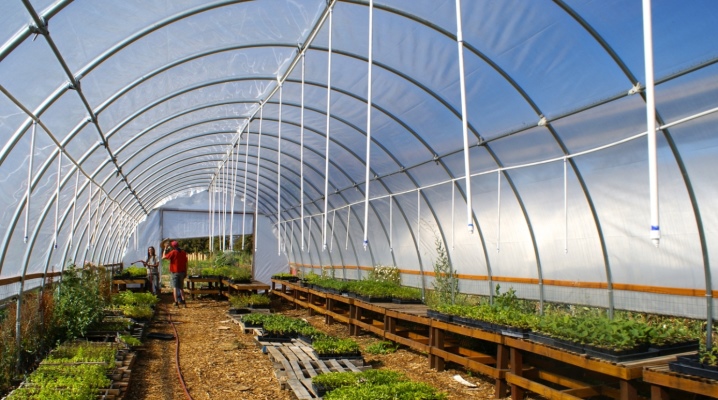
A polycarbonate greenhouse is an irreplaceable structure for people who have a summer cottage or a farm, because it allows you to grow early seedlings, keep the integrity of the crop from harmful insects and inclement weather. In order not to disturb the moisture balance, you need to take into account all the features of watering plants in the greenhouse.
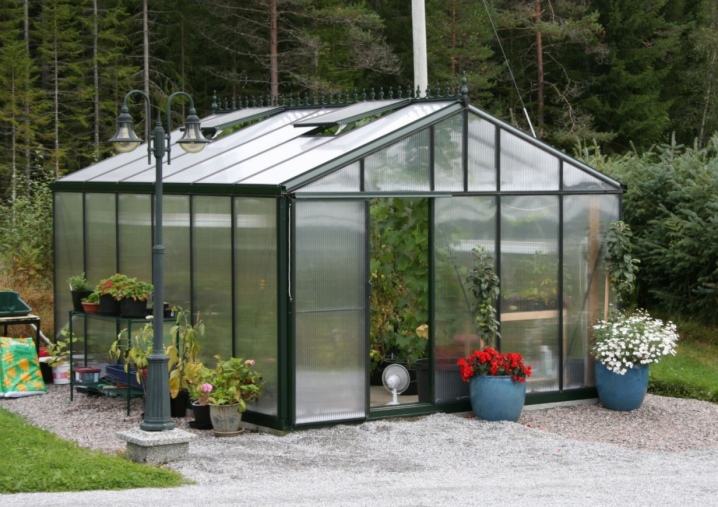
How often to water?
In the greenhouse, the soil moisture level should be 90%, and the air humidity should be 50%. It is under such conditions that a good growth and an increase in yield can be ensured with better protection against fungal diseases.
To achieve a similar situation in the greenhouse, watering the plants must be done in compliance with the following standards:
- crops need watering no more than 1-2 times a week, depending on the dampness and degree of warmth of the air;
- each plant should receive 4 to 5 liters of water;
- you need to water the bush only at the root and make sure that water does not get on the plant itself, otherwise the moisture will act as a lens, due to which burns may form;
- The best time to water is in the morning or early evening, because there is no hot sun to create a greenhouse effect.
Please note that the temperature of the water with which you water the plant should not be lower than 23 degrees, otherwise the plant will experience stress.
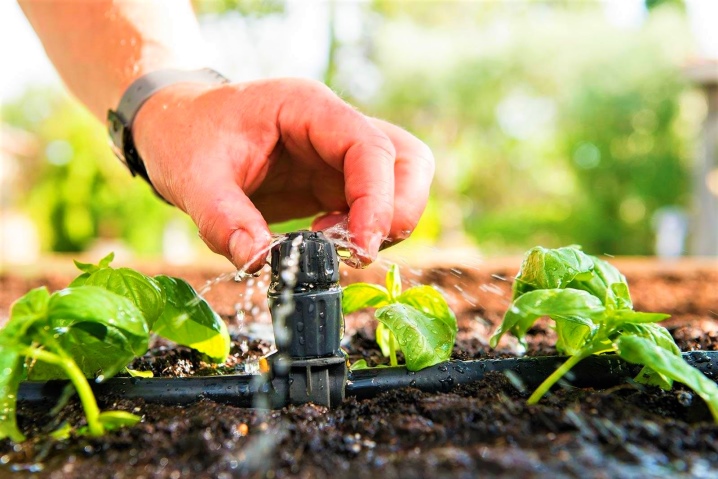
Optimal time
Summer residents and farmers do not have one opinion on the optimal watering time, but nevertheless, many recommend focusing directly on the climate and the characteristic features of the higher greenhouse. but if the weather remains dry throughout the day and the air is very hot, then watering time does not matter. Moreover, if you strictly and carefully irrigate, and the likelihood of burns on the plant is minimal, then you have no cause for concern. It is better to irrigate the land in the afternoon, since it is by this time that the water will warm up to the desired temperature.
Also, you do not need to water the plants in the late evening, because there will be an increased percentage of air humidity. If, nevertheless, the plants received moisture closer to the night, for their health, the greenhouse room should be well ventilated. Thanks to this, excess moisture will go away and will not harm the culture.
In damp and cold weather, you need to water the bushes before noon so that air circulation passes without problems during the day, and unnecessary water evaporates.
Please note that regardless of the time of day after watering, you need to allow the room to ventilate, that is, leave the doors and vents open. If this is not done, then excess moisture will participate in the formation of the fungus.
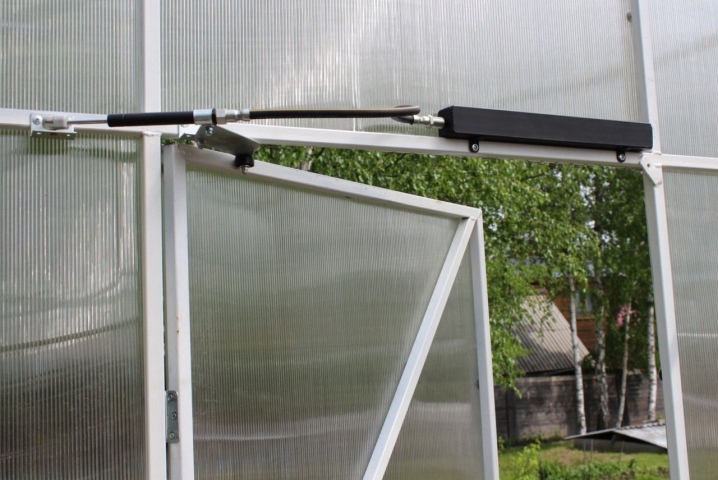
The ways
There are several basic techniques for watering plants in a greenhouse. Let's consider the main ones.
Manual
If your greenhouse has a small area, then this method is suitable for you. To do this, you will need simple tools - a watering can or a hose.
Note, if you use a hose, the water temperature will be low, which is not good for plants. This method is considered the laziest and most convenient, however, due to the lack of a regulator, you will not be able to determine exactly how much liquid the bush received.
A watering can is the most optimal watering option, because it is possible to collect settled water in it and control the amount of liquid for planting without any problems. For this lIt is better to put a barrel of water near the greenhouse or greenhouse and fill the container with water in advance to warm it up.
Experts say that it is better to cover the dispenser with plastic wrap or a lid so that excess moisture does not form if the barrel is in a greenhouse.
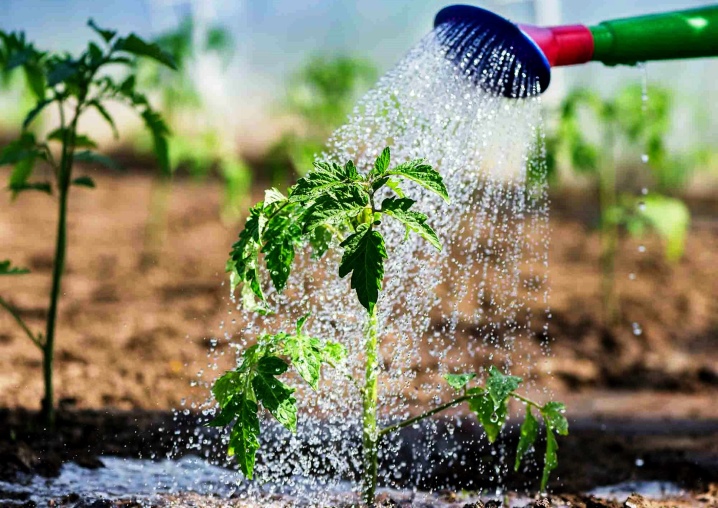
Drip
It can be used in large rooms, as the manual method will take a lot of time and effort. The positive qualities of this type are obvious:
- irrigation of only the root zone of the plant, with a minimum increase in moisture;
- the least probability of water droplets getting on the green part of the plant;
- hydration can occur throughout the day;
- there is no process of soil leaching and salting.
A special installation is being constructed for drip irrigation in the greenhouse. Moisture is supplied with the help of special tubes that go to the roots. You can buy them in stores or design them yourself.
Another option for homemade watering is the process of placing a tube in the ground, on which the vessel is installed with its neck down. A filled bottle will provide an even flow of water to the roots of the plant.
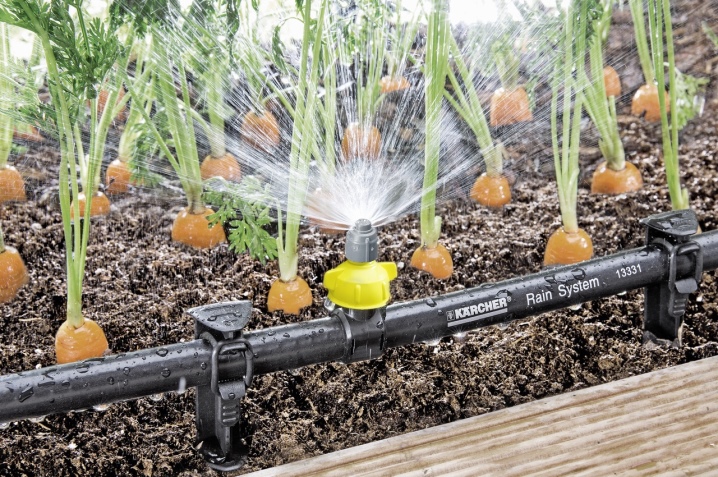
Auto
The prime cost of subsurface irrigation equipment is very high, therefore, it can most often be found in industrial greenhouses or in factories. If the owners have the opportunity to install such a device, then its use will fully justify itself.
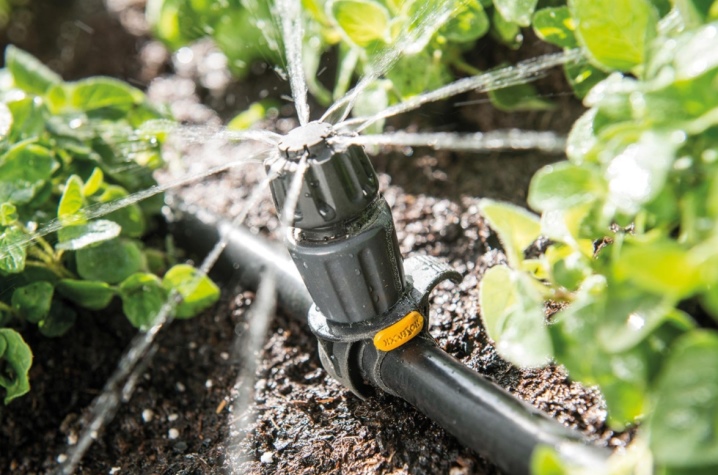
Features of watering different crops
Let's figure out how to properly water some vegetables in a polycarbonate greenhouse.
Tomatoes
It is recommended to irrigate the bushes early in the morning. During the dry season, secondary watering is allowed in the afternoon. If tomatoes grow in greenhouse conditions, then the room should be well ventilated before irrigating the land. If the humidity in the air is more than 50%, then the pollination process will not occur in tomatoes, because the pollen will simply stick together. To avoid this, you need to water the plant at the very root.
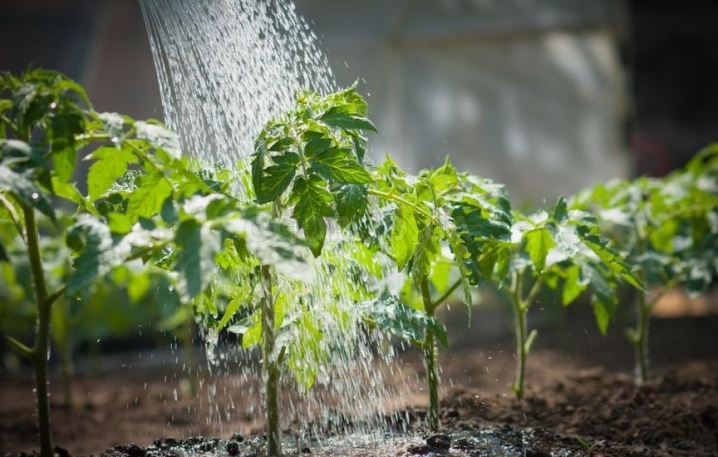
Cucumbers
The water temperature for irrigating cucumbers should be at least 25 degrees. When it is cold and dry outside, it is recommended to use water heated to 50 degrees and water it strictly under the bush without dripping on the leaves.
One of the features of cucumber seedlings is that their roots do not go deep into the ground. This means that high-pressure hosing can expose or damage the root system as a whole. For this type of culture, it is advisable to use drip irrigation.

Peppers
If you have an arid climate and it rarely rains, then watering is done daily. At the stage of fruit ripening, the frequency of watering should be 2-3 times a week. As for the temperature, it should not be lower than 25 degrees, otherwise there will be late flowering and fruiting.
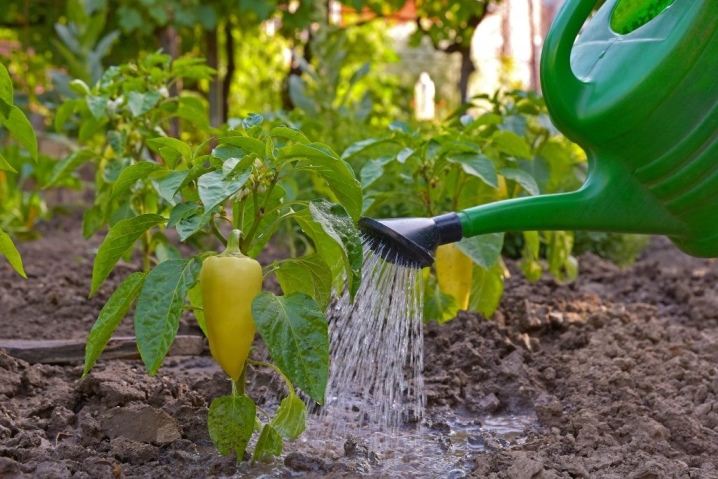
Potato
It is recommended to water the potatoes in the evening if the weather is hot without precipitation. In cool weather, you can water at any time.
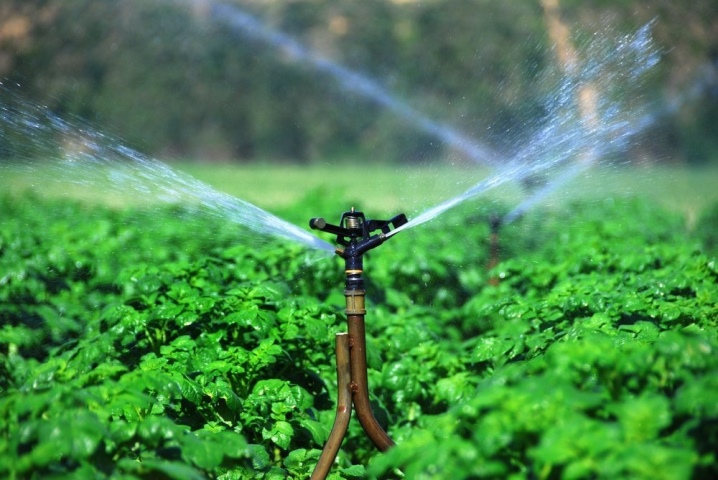
Cabbage
It is advisable to water the cabbage every 2 days, about 7.5-8 liters of water per 1 square meter. When the cabbage grows up, the volume of water will increase to 10 liters for the same area. In the case of cabbage, it should be watered from above directly onto the head of cabbage.
The best time to water the cabbage is at 7-8 a.m. or after 8 p.m. If there is rainfall outside, there will be enough rainwater for vegetables.
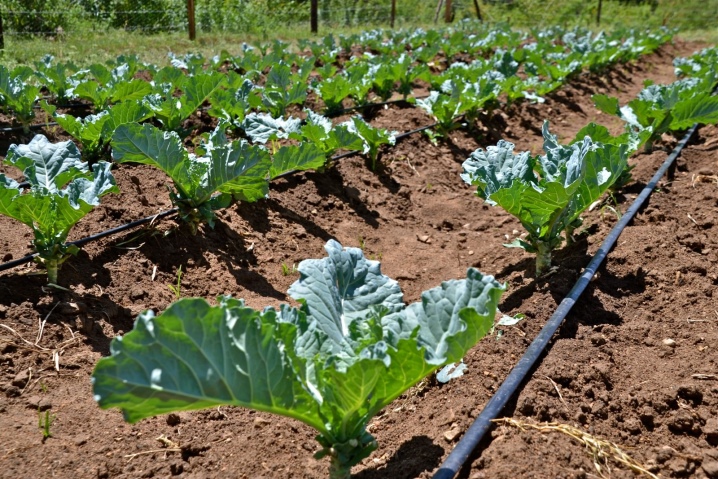
You can familiarize yourself with the secrets of proper watering in the next video.













I do not agree that water droplets are lenses from which the leaf burns. Only people who have never held a magnifying glass in their hands can speak this way. Apparently, the modern generation did not burn their names on benches and fences with a magnifier and do not know that the lens has a focal length, where the rays are collected in a point.Put the magnifying glass on your palm and turn your hand towards the sun - it won't get warmer than your palm, but try to lift the glass and you will get burned.
The burn is most likely due to the fact that the tube heats up to 40 degrees in the sun.
The comment was sent successfully.